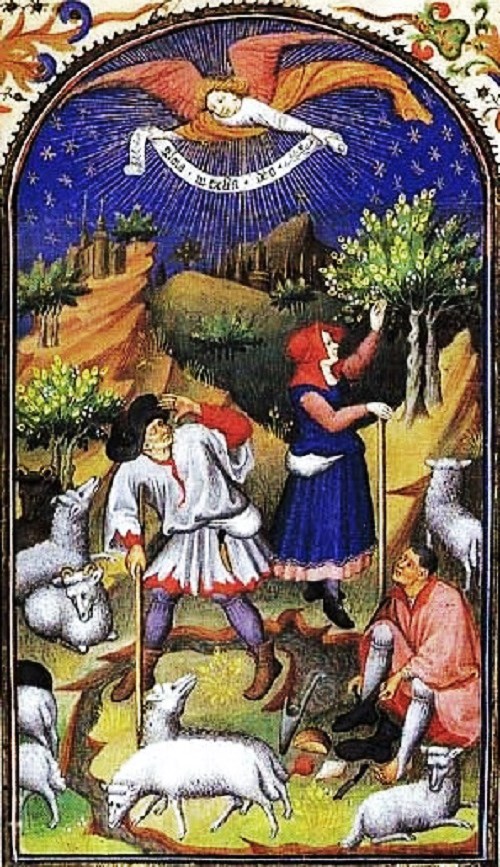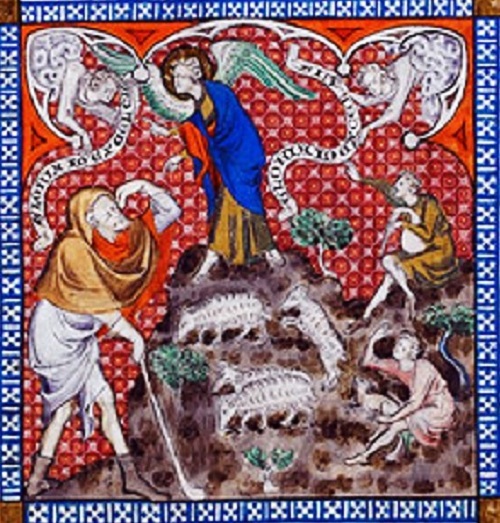Timeline of Judaism/Christian History
Judaism developed among the ancient Hebrews. Judaism is characterized by a belief in one transcendent God who revealed himself to Abraham, Moses, & the Hebrew prophets & by a religious life in accordance with Scriptures & rabbinic traditions. Judaism is the complex phenomenon of a total way of life for the people, comprising theology, law, & innumerable cultural traditions. The history of Judaism can be divided into major periods: biblical Judaism (c. 20th–4th century BCE), Hellenistic Judaism (4th century BCE–2nd century CE), Rabbinic Judaism (2nd–18th century CE), and modern Judaism (c. 1750 to the present).
c.2100 BC Calling of Abraham - the Father of the nation.
c.2000 BC Birth of Jacob, Israel. 12 tribes of Israel are named after Jacob's sons.
c.1900 BC Joseph slavery Egypt. Israelites become captives in the land.
c.1446 ? Exodus begins by Moses, Israelites leave Egypt & settle in Canaan.
c1010 BC David becomes king of Israel, making Jerusalem his capital.
c970 BC David's son Solomon becomes king & builds a temple in Jerusalem..
c930 BC Kingdom is divided into 2 sections: Northern (Israel) & Southern (Judah).
753 BC Traditional date for the founding of Rome.
722 BC Fall of the kingdom of Israel to the Assyrians.
586 BC Babylonians take Jerusalem & destroy temple. Jews taken to Babylon.
c538 BC Return of some of the exiles. Start of reconstruction of the temple.
c512 BC Completion of the temple.
c330 BC Conquest by Alexander the Great. Rise of Hellenism (Greek culture).
c.250 BC Translate the Old Testament from Hebrew into Greek.
63 BC Roman rule of Israel begins.
Christianity is a faith tradition that focuses on the figure of Jesus Christ. Christianity is more than a system of religious belief. It has generated a culture, a set of ideas & ways of life, practices, & artifacts that have been handed down from generation to generation, since Jesus first became the object of faith. The agent of Christianity is the church, the community of people who make up the body of believers.
c.4 BC Birth of Jesus Christ, in Bethlehem.
c30 AD Death of Jesus Christ.
c33 Pentecost & the coming of the Holy Spirit (Acts 2).
c33 Stephen - First Christian martyr (Acts 7).
c.48 Council of Jerusalem (Acts 15). Gentiles included
c.60 First Gospel published (often thought to be that written by Mark).
62 Martyrdom of James, "The Lord's Brother."
c.67-68 Apostles Peter & Paul martyred in the reign of the Roman emperor Nero.
70 Judaism rebellion on Roman empire ends. Destruction of the temple in Jerusalem.
Fr 70 Christianity moves to Antioch, Alexandria & Rome.
c.90 Book of Revelation & Gospel of Saint John written.
161-80 Persecution of Christians by Emperors Marcus Aurelius. Decius & Diocletian.
301 Armenia becomes 1st country to adopt Christianity as the state religion.
312 Rome emperor Constantine envisions a flaming cross "By this sign conquer."
313 Edict of Milan by Constantine - Christianity is religion in the Roman empire.
325 Nicene Creed declares "Begotten, not made; of one being with the Father"
367 Saint Athanasius is the first to list all 27 New Testament books
381 Ecumenical Council at Constantinople revises Nicene creed to current form.
c.382 Saint Jerome begins translating the Bible into Latin.
397 Synod at Carthage ratifies the 27 books of New Testament as sacred.
431 Ecumenical council at Ephesus where Mary is declared "Mother of God"
449 At Ephesus, Pope Leo I defends orthodox belief & claims Papal supremacy.
589 Insertion of "and the son" into the Nicene-Constantinopolitan Creed.
597 St. Augustine becomes the first Archbishop of Canterbury.
664 Synod of Whitby ratifies the authority of the Pope in England.
731 Bede writes his Ecclesiastical History.
800 Charlemagne is crowned emperor of Holy Roman Empire by Pope Leo III.
988 Conversion of Prince Vladimir to Christianity in Russia.
1054 Great Schism - Eastern Orthodox & Western Catholic churches separate.
1095 Pope Urban II orders the 1st Crusade to recover the Holy Land from Moslems.
1099 Crusaders conquer Jerusalem.
1182 Massacre of Latin inhabitants of Constantinople.
1187 Jerusalem recaptured by a Moslem army.
1189 Third Crusade led by Richard the Lionheart of England.
1204 Sack of Constantinople during the 4th crusade.
1216-23 Papal approval of the Dominican & Franciscan orders.
1266-73 Thomas Aquinas writes of systematic Theology: Summa Theologiae.
1305 Papacy moved to Avignon following a dispute with Philip IV of France.
c.1376 John Wycliffe writes for reform of the church.
1378 Return Papacy to Rome, Antipopes emerge. Ends in 1417 with Pope Martin V.
c.1380 John Wycliffe translates the Bible into Middle English.
1453 Constantinople falls to the Ottoman Turks.
1517 Martin Luther posts 95 Theses in Germany; begins the Protestantism.
1525 William Tyndale completes his translation of the Bible into English.
1534 Ignatius of Loyola founds the Jesuits.
1534 Act of Supremacy passed - Henry VIII becomes head of the English church.
1536 John Calvin publishes his Institutes of the Christian Religion.
1545-63 Council of Trent - Roman Catholic counter reformation.
1549 Book of Common Prayer published in England (revised in 1662).
1555 Peace of Augsburg ends religious wars in Germany.
1611 Publication of the King James Version of the Bible.
1618-48 Protestant/Catholic conflict in Germany (30 Years War).
1738 John & Charles Wesley form the Methodist church in England
1730-60 The "Great Awakening" - A revival movement among Protestants in the USA.




..jpg)

.jpg)
%2C%2Bc1240)%2Bshelfmark%2BArundel%2B157%2Bf.3v..jpg)


%2BAnnunciation-to-the-Shepherds.jpg)












%2B%2BAngel%2BPlaying%2Bthe%2BViolin%2C%2Bfresco.jpg)
%2BChristmas%2BBook%2Bwith%2Billustrations%2Bby%2BRobert%2BSeymour%2B(1798-1836)%2B93.jpg)

%2BChristmas%2BBook%2Bwith%2Billustrations%2Bby%2BRobert%2BSeymour%2B(1798-1836)%2B%2B94.jpg)
%2BChristmas%2BBook%2Bwith%2Billustrations%2Bby%2BRobert%2BSeymour%2B(1798-1836)%2B%2B96.jpg)
.jpg)
%2BChristmas%2BBook%2Bwith%2Billustrations%2Bby%2BRobert%2BSeymour%2B(1798-1836)%2B%2B%2B92.jpg)
+A+Carol.jpg)



%2BChristmas%2BBook%2Bwith%2Billustrations%2Bby%2BRobert%2BSeymour%2B(1798-1836)%2B%2B(1836).jpg)
%2BChristmas%2BBook%2Bwith%2Billustrations%2Bby%2BRobert%2BSeymour%2B(1798-1836)%2B%2B%2B(1836).jpg)
%2BChristmas%2BBook%2Bwith%2Billustrations%2Bby%2BRobert%2BSeymour%2B(1798-1836)%2B%2B(1836).jpg)
%2BChristmas%2BBook%2Bwith%2Billustrations%2Bby%2BRobert%2BSeymour%2B(1798-1836)%2B%2B95.jpg)


+Queen+Charlotte,+Princess+Sophia+Charlotte+of+Mecklenburg-Strelitz,+1744+-+1818.+Queen+of+George+III+About+1763.jpg)










%2B'A%2BChristmas%2BDole'.jpg)


